
From guided walks to guidebooks, there are dark rumblings in bothy-going circles that bringing money and publicity into the scene risks undermining the free-for-all ethos that makes bothies so special. Where will it all end, asks John Burns.
A few weeks ago I made a post in a Facebook group about mountain bothies. In the post I suggested that, in 30 years time, folk will only be able to visit bothies in organised groups. This was after noticing that a mountain festival was offering a guided walk to a bothy for a fee. This appeared to me to be contrary to the bothy code which expressly forbids the use of bothies for commercial purposes.
I made the post for two reasons. Firstly, because I do believe that our relationship with the outdoors is likely to change radically over the next 30 years and secondly, like a mischievous small boy poking a sleeping elephant with a pointed stick, I wanted to see what would happen.
Just like the small boy with the stick I wasn't quite prepared for the eruption of fury that ensued. It seems that my post helped bring to the fore an argument amongst devotees of the bothy world that has been rumbling along for many years. That the post got over 300 responses ranging from reasoned argument to character assassination, testifies to the passions that these humble shelters can arouse. I see this as a positive thing, it means that, at least to a significant proportion of hill goers, bothies are important places.
The MBA walk an unenviable tight rope between maintaining the goodwill of landowners and providing basic shelters that allow us to enjoy wonderful nights in the hills. It is the MBA's policy, or perceived policy, towards commercialisation that evokes the greatest vitriol. It's difficult to unravel the various points of view. If you put three bothies dwellers round a bothy fire you'll have at least four opinions.
The work of the MBA, and the people who volunteer for it, has given us all a priceless gift of wonderful shelters in wild places. Let us not allow our passion for these places to tear apart the very thing we value most.
Keep them under the radar?
There are those who are against any kind of publicity for bothies. Some folk argue that to promote the existence of these remote and open shelters is to risk unleashing a tide of visitors that will so enrage landowners as to result in many being withdrawn from public use, threatening the very existence of mountain bothies as we know them.
In past years many bothies were known only to a small community of devotees who whispered their locations to other members of the brotherhood in dark glens on long bothy nights. But those days are gone forever. The MBA now publishes brief descriptions of bothies on its website, with basic details on locations given as grid references. This nominally restricts access to those who at least have some basic map reading ability. Given the MBA's charitable status it has an obligation to act for the public good and probably had no choice but to make available information on where the bothies it maintains are.
Other bothies, maintained by estates rather than the MBA, remain 'off grid', and some in the bothy community still struggle to preserve knowledge of their whereabouts to a select few against the ever-increasing flow of the information superhighway. I once, in my innocence, wrote a blog about such a secret shelter. Such was the diatribe of abuse I received that for months I could only venture out after dark heavily disguised as a singing nun.
The secrecy horse may have well and truly bolted, but advocates for restricting information point to the problems that overuse can bring, from overcrowding to litter and, in some cases, vandalism. Such behaviour has indeed resulted in the closure of some bothies, for example Poca Bhudie. Other bothies were destroyed by fire and were not permitted to be restored, like Nest of Fannich. Bothies are an important part of our outdoor heritage and it seems wrong that that rights of access hang on the slender thread of landowner's goodwill. To stray into that argument is, however, to sail into the deep, shark infested waters of land reform and beyond the scope of this short article.
Or sing their praises?
The other side of the bothy argument is occupied by those who wish to promote the existence of bothies, on the basis that full disclosure beats secrecy. Some advocates have even produced bothy guides which encourage bothy novices to tear themselves way from virtual reality and enjoy a night of bliss in a cold, damp howff, without benefit of electricity, running water or even a decent broadband connection.
At the heart of their argument is the contention that, far from bothies suffering from a deluge of folk newly acquainted with their existence, the greatest threat to their existence is a slow decline in use as the numbers of bothy dwellers suffers a long-term decline. My own anecdotal experience wandering the wild glens of the Highlands suggests that whilst some of the better known bothies are experiencing greatly increased footfall, the majority are actually seeing a decline.
A Cairngorm ranger told me, as he tactfully suggested that it might not be a good idea for a man of my advanced years to wander into a blizzard alone, that in the 1960s there had been fifty folk one New Year in and around the Shelter Stone howff. These days this isolated refuge might have to wait until February for its first visitor. How many walkers would visit Moal Budhie bothy if the Cape Wrath Trail didn't run past its door?
A recent survey by the Ramblers suggested that, for people under 35, lack of knowledge of where they could safely go, what routes there are and where they can stay in the outdoors was a major barrier to accessing the outdoors (see UKH news). This is surprising in an age where information pours at us from every available scheme.
Old codger alert:
When I began walking and climbing, if you wanted to know about a bothy or a hill you asked around until you found someone who had been there. They told you from personal experience the best way to get there and what places to avoid. Can it be that this method of getting information was more effective than the internet? Perhaps we are all deluged by so much information it simply becomes white noise.
Part of my Facebook post related to how our relationship with the outdoors is changing. There are so many more barriers for people under the age of 35 accessing the outdoors than there were for my generation of baby boomers. The nature of employment has changed so the security I and my friends enjoyed no longer exists, and many younger people are in lower paid employment which means they are forced to work longer hours. These and other barriers mean that that the next generation of hillwalkers is likely to be much smaller than our present and may herald the beginning of a significant decline.
The point I was making in my post is that future hillwalkers may well lack the confidence to wander the hills unsupported and will perhaps increasingly seek the support of guided parties. The technology now exists to track every hillwalker in the British Isles. Like many, I enjoy my time in the hills as it enables me to step away from the tyranny of the mobile phone into a world where I can wander free from the regulations that stifle us in everyday life. That too is a luxury that may soon be coming to an end. Since every hillwalker could carry a device that will enable them to be located instantly in an emergency how long will it be before such technology becomes mandatory for the hillwalker? I hate the idea of such an intrusion, but if it were to overcome the necessity for prolonged searches, in hazardous conditions, by MRT personnel, do not such esoteric arguments become redundant?
I cannot predict with any accuracy how our relationship with the outdoors will change but I can predict, with absolute accuracy, that it will change. There are many issues that beset our lives in the outdoors. There is the whole re-wilding debate, the effects of driven grouse shooting, the proliferation of fresh bulldozed tracks across our hills and the growth of windfarms and hydro schemes. All these issues are overshadowed by the overarching debate over land reform.
Cut to the case in point. The MBA do not accept that guided walks, which they do not directly organise, nor any of the guidebooks that have been published, represent the commercialisation of bothies. The book that has generated most controversy is Geoff Allan's Bothy Bible. Mr Allan makes a donation to the MBA from what he receives from sales. The MBA argues that they were made aware of the book close to the publication date and felt that as the book showed their work in a very positive light there was no reason to decline the author's offer of a donation. They see the book as good, free publicity for their work and feel that it would have been a very odd decision for any charity to decline such support.
Some accuse the MBA of profiting indirectly from the work of its volunteers.
Neil Reid, a Trustee of the MBA and a Maintenance Officer for a bothy refutes this:
"The only thing that we have to be careful of is that we do not accept money from an illegal source, or one lacking integrity or which could harm the reputation of the charity" he says.
"None of those applied in this case. It passed the test. In fact it is a fine book and has given many people lots of pleasure and portrays the Association very well. We could also reasonably argue that it would be quite wrong of us not to accept such a donation as it furthers the cause of the charity."
Whether the debate will ever be resolved to everyone's satisfaction, it does highlight one thing - how passionately many people feel bothies and the contact they give us with wild places. The work of the MBA, and the people who volunteer for it, has given us all a priceless gift of wonderful shelters in wild places. Let us not allow our passion for these places to tear apart the very thing we value most. Perhaps there should be more protests, maybe we should all be making our voices heard in defence of our hills and our right to roam in them. There are so many issues and many more voices but there is an increasing need for the outdoor community to make its voice heard.
Now, picture in your mind an elephant sleeping peacefully and a small boy, stick in hand, tip-toeing up to it.
About John Burns' new book Bothy Tales
- OPINION: It's The End of An Era For Cairngorm Bothies - And The Start of a New One 22 Oct, 2023
- OPINION: The Hot Tent - the opposite of fast, light, and miserable 2 Nov, 2022
- PODCAST: Lyme Disease - What You Need to Know 12 May, 2022
- Desert Island Peaks: John Burns 14 Jan, 2021
- 10 Tips For a Winter Bothy Night 20 Dec, 2019
- Eight Things They Never Told You About Mountain Navigation 2 Aug, 2018
- Ten Things They Never Told You About Hillwalking 16 Nov, 2017
- 40 Years On The Pennine Way 21 Sep, 2017
- GEAR NEWS: The Last Hillwalker, by John Burns 22 Aug, 2017
- 10 Types of People You'll Meet on the Summit 9 Aug, 2017





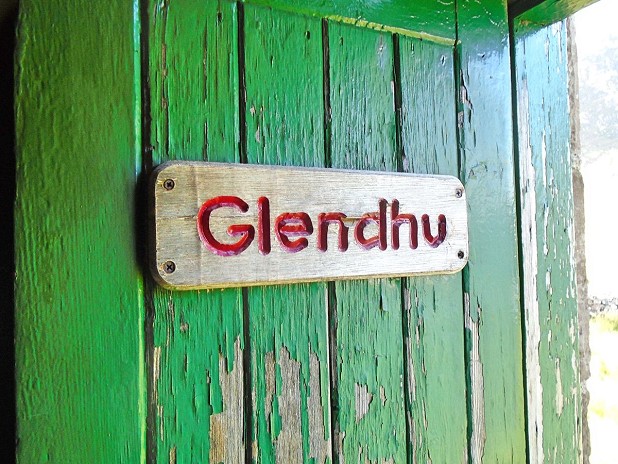

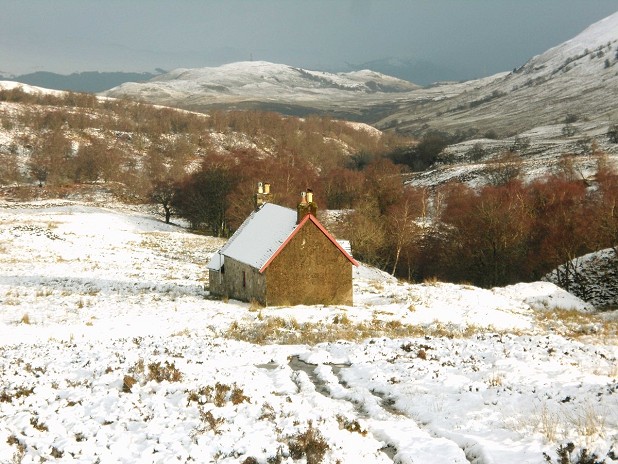
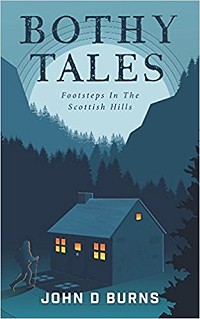




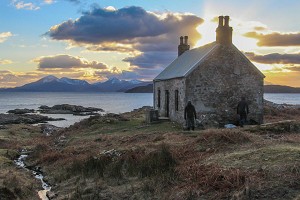
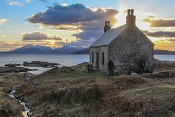
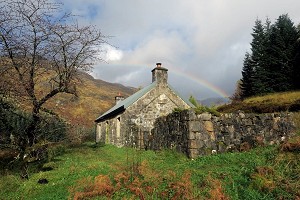
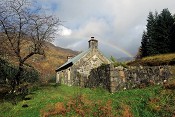
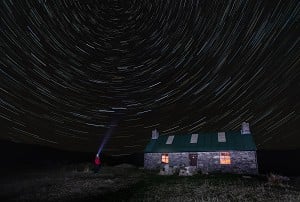



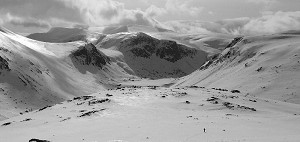

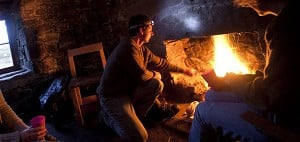

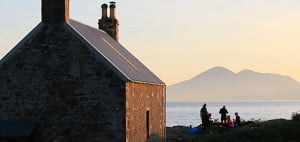



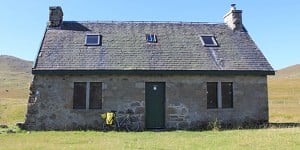

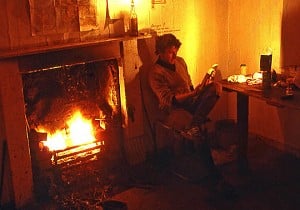
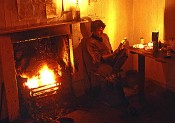
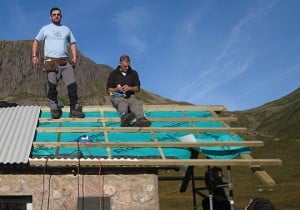
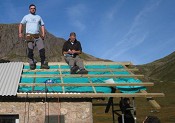
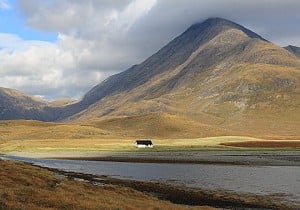
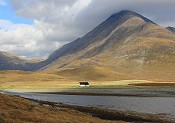
Comments
An interesting dilemma, something I've thought about myself, from a "writing about it" perspective.
A couple of old friends and I started visiting bothies each winter, during our annual week in the winter mountains. At first, they were a means to getting into the more remote areas, now they are part of the experience itself, and sometimes no hill is involved.
When we first turned up at the door of Glen Pean on a bitterly cold February night, we had no previous experience of actually staying in a bothy. There were a couple of chaps "in residence" in the sealed end of the bothy with its stove so, being polite, we restricted ourselves to the utterly cold and grim other end with a fire so rubbish we actually had our feet inside the hearth, as the temperatures that night fell t minus 15 outside. Had we been regular users, I'm sure we'd just have joined the two chaps, we certainly weren't unwelcome.
I joined the MBA on our return. I remember receiving the pack of newsletter, booklet and most importantly, the photocopied list of bothies and their locations. These were only listed by region and grid reference. I pulled out all my maps and spent a happy few hours marking them on the OS sheets, and making notes on the list to make future planning much easier.
Over the years we've now visited a fair number of the NW and Central Highland bothies, and have grown to love them. We've learnt to carry more fuel than we thought we could carry. And more hipflasks. The whole thing has become part of the joy of being in outdoors, somewhere in the middle of nowhere. There's also something about sitting in a remote building around a fire, whilst the mountains gather around the walls, and the wilderness almost seems to grow after nightfall. On a still clear night, to walk outside and stare at white mountains shining silver due only to starlight, is something that makes life worth living.
I do think, though, that all the above experiences were a valuable part of the learning experience. Our bothy knowledge was hard won, and added to with each trip. There were no easy gains, I spent a long time planning trips and working out the best way to approach each bothy. I think this has contributed to my love of these wild highland shelters.
So, does the fact that much of this planning is handed to you on a plate lessen the experience? I'm not sure. Perhaps it reduces the feeling of "belonging to an elite group" of mad folk who stay in stone huts in the middle of nowhere, and perhaps that's part of what's disturbing us "bothy folk" when we see them in the press, on the BBC and in the Sunday Times.
Increasingly, I write myself. This has mostly been about canoeing, online and in mags, but I now have my own blog (non-commercial, in my profile if interested). And on the paddling side, even my small efforts have noticeably increased the (small) number of people paddling some of "my" routes - I know this as they've told me.
A couple of weeks ago, I wrote a piece about Uags, and the joy of staying there when the rest of the country was being battered by the Beast from the East. I did ponder whether popularising the bothy was the right thing to do, but hopefully I got the right balance of making it clear what it meant to visit such places, and I talked about the bothy code, that it will educate people to respect these places. And I think this is what the Bothy Bible is trying to do, and I think Geoff Allan has tried hard to get that balance right. Inevitably, though, it is advertising their presence, and it is commercial. Since the MBA themselves added locations to their on website a few years back, it is hard to criticise the Bothy Bible for taking it a step further, and the demand from customers was no doubt already there. It also raises money for the MBA directly, and possibly increases their membership too.
I still, though, wonder whether I should be writing about some wild places or not, but I love doing it, and I genuinely enjoy finding out about others have been inspired to do the same having seen my stuff.
I don't know if we should call this the "Wainwright" effect. That gentleman has often been "blamed" for the fact that the Lakeland Fells are now teeming with people. I'm not sure this is right, I certainly don't believe the numbers would have stayed low if his guides hadn't been published. I think he just got the formula right. The folk buying his books were already heading for the Lake District, though its fair to say he may have focussed their attention on particular favourite hills of his. If he hadn't done it, somebody else would have done. Perhaps its similar with the Bothy Bible?
There are a number of other major factors too. Certain bothies are now regularly used as part of the Cape Wrath Trail for instance, and during the peak season, this must be having more of an effect than the Bothy Bible. I bet Essan is even busier this year because of the family who got stuck there last year and rescued by the "Harry Potter Express".
My suspicion is that the remote, out of the way, bothies will be fine. The folk who seek them out are mainly the type of people who would understand and respect them. Those bothies that are easy to get to, though, are more at risk of over use and abuse. I guess there is an argument that the management of these bothies will need to be addressed, even if its simply with some sort of basic toilet facility as you would find behind a Scandinavian wooden hut, though who would pay? Not something I particularly want to see, the bothy shovel is part of the experience, but when you see places like the woods immediately next to A' Chuil, something might have to be done.
I am, though, completely against the use of bothies by commercial organisations for overnight stays. I guess we need to work out where the commercial line lies, but I can't honestly see how writing about them for a book is much different to what happened in the old days when, for example, Richard Gilbert's Walks books mentioned them as part of the description, its simply that in the modern world such information appears more rapidly and is so easy to get hold of. People paying to be taken to a bothy as a specific part of their trip, though, is definitely on the wrong side of the line.
Blimey, I went on a bit!
Thanks for these thoughtful and informed pieces from John and Mal.
It might help to see how others deal with this common dilemma. I know Scotland’s situation is probably unique in many ways but there are open bothies, refuges, shelters that many of us will be familiar with in N America, the Alps, Dolomites, Mt Kenya, Tasmania and New Zealand (in my experience so far) and they seem to cope and be cherished without being loved to death. So I don’t share the sense of impending doom that these others do. I suspect we’ve reached peak Munro compleationism (in terms of numbers/year) in the last couple of years and perhaps away from the popular Bens Lomond, Nevis et al I think I still find solitude when I want it
'Where will it end?'
well, hopefully, with bothies' continued use past a generation that seems to perceive ownership simply by coming to adulthood prior to the internet's naisance.
Speaking personally, and only from personal experience, I well remember asking the question 'what is a bothy' and replying 'really? where and how do you find them?' such was my introduction prior to the MBA publicising their list. Latterly, I know of at least four coffee tables in London and the Home Counties upon which Mr. Allan's tome rests, none of the owners of which will ever make the effort and similarly, and more depressingly, the youngsters currently late teenagers like my own that I know personally are HIGHLY unlikely to venture forth unless guided for their own reassurance notwithstanding that of their overbearing parents.
In summary; with a few exceptions (shock horror! persons under 50 and without beard arrive at free accommodation reasonably close to transport link! What is the right minded world to do?) bothy culture will die off through natural wastage, books or no books, Internet or no internet, and the 'defenders' have nothing to worry about. Their chilly nights of whisky and interminable tales of yester yore are safe from the literate infidels.
"There's also something about sitting in a remote building around a fire, whilst the mountains gather around the walls, and the wilderness almost seems to grow after nightfall. On a still clear night, to walk outside and stare at white mountains shining silver due only to starlight, is something that makes life worth living."
Absolutely.